Photographing Thailand, Part One
A bit about me and my camera. It was late August / September 1983 and being a member of the United States Navy’s Intel community and Special Forces I remember being called into the old man's office and being told there’s no experience
like the experience of being there in person and since reconnaissance was a huge part of the job description he thought it was time I got my feet wet actively collecting intelligence.
For a few seconds I had mental images of James Bond type special cars, tuxedos, a friend named M, and Ms. Moneypenny trying to get a hand in my shorts. That was when I noticed he was talking again and the phrase “would you care to share your day
dream with me or can I go on?” prompted me to stand a bit straighter while I was at attention and force the thoughts of grandeur from my head. This was my first shot at being an “active” HUMINT (human intelligence) agent and
I wasn’t even paying attention. I’ll admit it, I said “YES SIR!” as enthusiastically as I could muster without hearing a word he said and was told to report to Ensign D. Danger (named changed to protect the insanely
criminal) over at the squadron on the leeward side of Guantanamo Bay Naval Base. A quick about face and out of his office I went, picked up my motorcycle helmet and almost ran outside to my 1983 Honda 650 Nighthawk that just the week before had
been flown over from Homestead Florida for me on the milk run by the wonderful guys who fly the C-131 Hercules transports. A few weeks ago I had flown that same milk run (mail and fresh veggies and milk pickup) into Homestead strapped into a very
uncomfortable seat and during the four hour load out I had taken a taxi to the nearest Honda motorcycle shop, picked out a bike, bargained for it, talked my way out of taxes and registration fees (after all it wasn’t staying there) and
got them to drop me and the bike off at the base with a free Shoei full face helmet which I then took to the C-131’s loadmaster (along with FIVE cases of beer as a bribe) and talked him into stowing my new bike between the bags of mall
and crates of veggies.. An agreement to make a McDonalds run and pick up 1500 Big Mac’s and 1500 fries in a motor pool van sealed the deal. (The squadron would set up a booth at the ferry landing a few times a month and sell Big Mac’s
and fries for a small profit, but enough to pay for their parties because in 1983 we didn’t have such places on base.)
As I climbed on my bike and headed down Stephen J. Crane hill (the intel station was on top of the hill along with the radars we used to track our recon birds) I was envisioning a backseat ride in a F4 working the cameras, maybe donning a
space suit and getting a ride in a U2 or SR71 Blackbird, all kinds of unrealistic fantasies that a young kid gets when the old man (Commanding Officer) entrusts you with your first HUMINT mission. I had another 30 minutes to think about it as
I drove my bike on the ferry and headed over to the leeward side of the base where the air operations were and quickly ruled out the U2 and SR71 fantasies knowing you needed a custom fitted astronaut flight suit and they didn’t launch from
there anyway.. but maybe an F4? Hey, a jet is a jet! Upon arriving and asking for Ensign D. Danger the clerk couldn’t hold back a smirk and said I’d find him out on the tarmac and he gave me the slot number. It turns out the slot
held a Huey Helicopter and Ensign D. Danger was busy removing tree limbs from the skids. He got his “Danger” handle from his penchant for flying low enough to tree tops to bring back flora and fauna samples, pieces of the gulf course,
river water, or whatever took his fancy that day. His father was a big wig at Bethlehem Steel and as such he got away with lots of things others didn’t. Like eventually teaching me to fly the Huey on weekends.. Or buzzing the golf course..
Or borrowing a bird to go scuba diving off a nearby Ryukyu Island.. Having like personalities when it came to risk taking we soon learned to work well together but that was a bit after where I’m going with this..
As I approached he got this what could only be called evil grin on his face when I approached and wanted to know if I was the “new meat” and silly me, I thought he was just trying to be funny. After the preflight he strapped
me in an odd harness, handed me a Nikon 35mm with a long lens and a lanyard he attached to my harness, a big roll back (it could hold lots of film, like a few hundred shots), and told me it was loaded with high speed film, the camera was set,
had a 5fps motor drive, and all I had to do was turn this big ring right here and try to kept things in focus as I took pictures of the military buildup along the fence line. You see, we were about to invade Grenada and Cuba was trying to discourage
us from taking any action by moving tons of armor and men right up to the dual mine fields (theirs and ours) that lined the fence line. Our job was to “swoop” in at the last second while hoping not to get shot down and get some real
time images of the bad guys. My job was to work the camera and I didn’t even know where the shutter button was. Fortunately film has a wide latitude exposure and our own labs can correct for bad exposure by a big margin (digital can’t
do this) so knowing how to actually work the camera wasn’t mandatory. With a five minute introduction he clicks my harness onto a frame inside the side door where the machine guns usually are, smiles a bit, and says “don’t
forget to take the pictures when you see the bad guys” and with that he climbs in, fires up the Huey, and away we go.
At first it’s kinda cool, he’s going all over the base practicing maneuvers and this is when I learned I don’t get motion sickness because if I had I would have immediately known about it. Then I hear in my helmet (didn’t
even know it had speakers and a mic at that point) “get ready, the fence line is 30 seconds away” and we start going really fast, break over some trees and there it is. “Get ready to rock” was the next thing I heard
and all of a sudden he turns it on it’s side and I FALL OUT OF THE BIRD dangling by the harness with the camera in hand almost crapping my pants. I almost got the camera up to my eye after the shock subsided a bit and then we were gone
“did you get the shots?” Umm… no. Could you go a bit slower next time? “Only if you want to take the chance of getting shot down.” And then we take a second pass at another spot and I hit the shutter and I can
feel the vibration a bit as the camera is working and I’m fighting to find the focus. 10 more passes later I think I have the knack for it! I didn’t. Back at the lab I find out that out of over 200 frames I got maybe 3-4 of them
in focus and they weren’t of the bad guys! Crap. No problem, I think because no one else wanted this job (or to fly with Ensign D. Danger) we did this every day for the next two weeks and pretty soon we’re getting to usable shots
and the old man actually was telling me “good shot!”
Of course I had no idea what I was doing but the base photographer was a civilian and no way was going to do the job so they picked the stupidest guy they thought would go for the idea (me), handed him a camera, and I went for it. After the
first week of this I found myself at the base library looking up photography books and while I found some I wasn’t that surprised that there were none outlining the techniques of hanging out of a helo at 5fps and getting good pics. Still,
they talked about shutter speed, film speed, aperture, and the basic controls of a 35mm camera and I put enough pieces of knowledge together to start getting the exposures pretty darn close without the lab having to intervene and they were getting
sharper and sharper. I was hooked, from that moment on I had the photography bug and I couldn’t read enough about it or find practice enough. (note to self: DO NOT take naked pictures of the girl friend on the same roll of film you take
recon shots on that you have to have the base lab process)
The following years of my career would find me in many places SF operators go and I’d often carry 2-3 Olympus OM-1n cameras with my favorite lenses and films and when a rifle wasn’t in my hands the cameras were. These were my
cameras and my pictures, but I still had to have anything I shot vetted by the SSO (special security officer) but I was still left with enough to write some stories and start a part time career in photojournalism under a different name (couldn’t
use my real name) and I used this name and wrote / short stories for many years after. It wasn’t until after I was retired that I hung up the Oly’s and started learning digital photography in 1999 with a 3 megapixel Olympus C-3000.
Even back then I was getting some decent images from this small little P&S (point and shoot) and I had officially caught the digital photography bug.
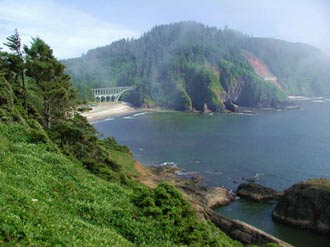
|
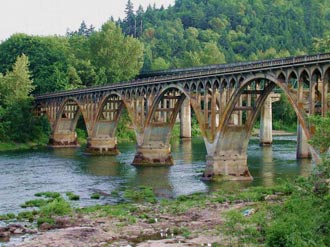
|
At the time I was still shooting film for travel books and some other assignments I took on while in Thailand but had taken to dragging along an Olympus E-10 digital SLR (DSLR) to play with during my free time, mostly because digital was even back then
obviously the future and I really needed to learn how digital worked, what part the computer played in the processing of the images, and everything I could. As I traveled around Asia I took some technically very crappy pictures during my learning
curve but I was pretty happy not having to pay to get them developed and having instant feedback as to the exposure and composition.
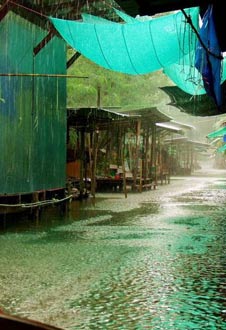
|
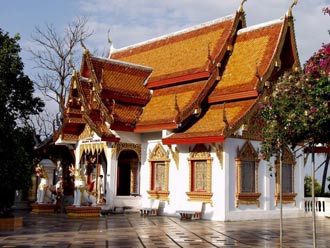
|
Family issues forced my return to the states and since I was planning on being there a while and photojournalism was out of the question I decided to open a small studio and work on my portraiture and wedding skills and during my free time capture some
landscapes for my stock portfolios. Due to equipment wear and tear I was forced to choose another camera company and at the time settled on Nikon. I purchased my studio equipment, a Nikon F5 film 35mm (I was very comfortable with film and still
learning digital) and a Nikon D100 6 megapixel DSLR and later a trio of Nikon D2h’s. My company grew fairly quickly and soon I was gaining a lot of confidence using digital. By the time I headed back to Thailand where I currently live I
had changed over to Canon equipment and exclusively digital and had about 4-5 years of studio and wedding experience under my belt. I’d also built up my stock portfolio with some decent landscapes.
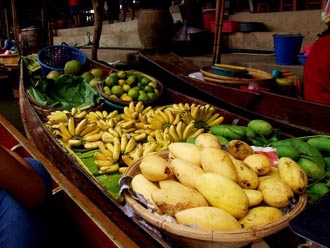
|

|
|
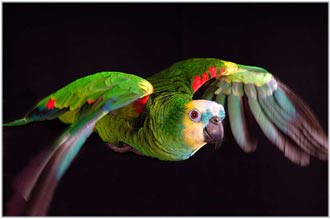
|
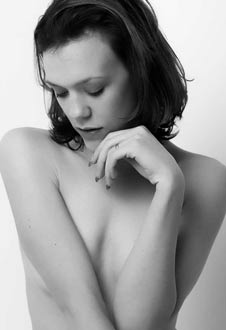
|
|
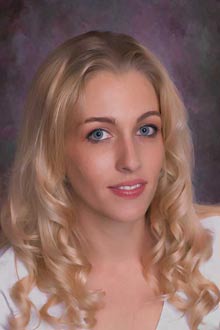
|
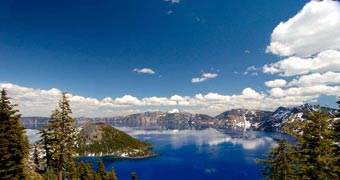
|
|
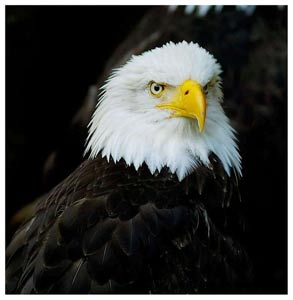
|
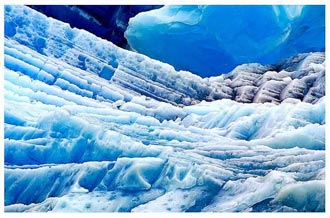
|
|
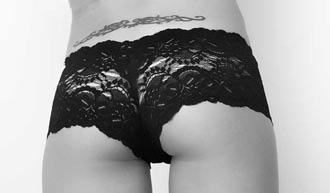
|
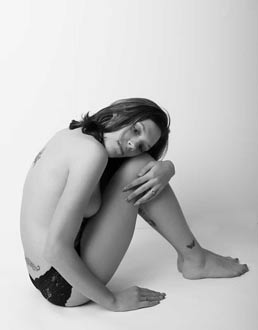
|
Since returning to Thailand I’ve been working back in the photojournalism field (sorry I can’t share any of this work at this time) and working on more landscapes which you’ve seen in some of my previous submissions. It’s been
a seven year trial and error learning experience learning digital photography (as opposed to film) and during that time I’ve worked hard to improve my portraiture, event, and landscape work. In fact, when I left the states I had built a
small starter of a business into an annual six figure profit and had virtually captured the wedding and high end portraiture market and quite by accident was the only person who town who specialized in doing nudes. In the coming series I’ll
talk more about how I did this but I’ll tell you right now running a successful photography business has much more to do with marketing and business skills than it does your photography skills.
I wanted to lay out the articles I plan on covering and how I plan on covering them. We all know the internet is rife with a plethora of photography websites from camera and equipment reviews to “how to” skills. Instead of repeating
all of these other peoples great work I’m instead going to talk about the bits and pieces of their work which in my opinion would help you take great pictures in Thailand on several different levels and then link you to these great sites.
I’m going to discuss technique and show samples that illustrate the technique so you can easily understand what we’re doing. I’m also going to start with the cheapest and most common P&S (point and shoot) digital cameras
that we all can afford and discuss my criteria for why I’m selecting / recommending certain models and then show you what they’re capable of and how. If interest holds I’ll move into high end professional gear, portrait photography,
landscapes, professional flash use, studio lighting, and as we move along I expect that at first it will be interesting to the greatest number of travelers and then because of cost, time required to learn, dedication, etc, the interest will fall
off to the dedicated hobbyist and aspiring professional.
In the next article I’m going to talk about my criteria for selecting a point and shoot digital camera in the $200-$400 price range, the reasoning behind my criteria, I’m going to travel to Singapore and actually buy the camera
I decide on to meet my own P&S needs, and then I’m going to capture images with it inside Thailand and discuss the technique I used to capture the images. My criteria for this new P&S in the order of importance is listed below:
(the reasons for the criteria will be discussed more in depth in the following article)
1. Size. I’ll be looking for a pocket camera that’s as easy to carry as an average cell phone so that the first rule of photography is made easier and that is to have a camera with you when the opportunity for a great or interesting
shot presents itself.
2. Ease of use. I want this P&S to take great pictures with as much automation as possible, yet as you progress to knowing more about the camera I also want the controls to be as easy to access as possible so you can be as creative as
the camera allows. So you can pull if from your pocket and catch that quick picture of your buddies girl with another guy as they walk past, or possibly take your time and set up the camera to take that beautiful sunset shot on the beach of your
girl and have it turn out great.
2. Image quality. A realistic goal with a modern P&S is to produce very high quality 4×6’s, high quality 5×7’s, and decent 8×10’s. Yes, on occasion you’ll be able to produce bigger pictures but as a general
rule P&S’s have a limited amount of pixels and a limited amount of quality per pixel, and as you increase the size of the image these limitations become more apparent and less acceptable. Image quality is largely affected by the following
specifications we’ll be looking for:
a. The lens. I’ll be looking for as close to a F2.8-4 lens as possible, as sharp as possible, and in the range of 24-130mm (35mm camera equivalent)
b. High ISO capability. ISO is like ASA for film. The higher the number the less light is required to properly expose an image. Most P&S’s are limited at ISO 400 or 800 but some of the newer models can go to ISO 3200. As a hard
and fast rule, the higher the ISO you use the less the quality of the image as it introduces noise / grain and you loose detail and quality quite rapidly. I’ll be looking for a newer model that produces good results at the higher ISO’s
so if I want to take a picture without flash in a bar or on the street at night I can do so.
c. In camera processing. Different cameras have internal programming that processes the image you capture to specifications you set it the camera. I’ll be trying out many cameras before I make my decision so the best picture comes
from the camera with the least (if any) post processing on the computer is needed.
d. Optical stabilization. This helps you take well focused pictures at much lower shutter speeds than you normally could. Optical (by controlling the lens) stabilization is very new in this class of cameras so our choices might be limited.
3. Memory card. Cameras use many different types of memory cards and in practice this turns out to mean that X amount of dollars per Y amount of storage as some types of cards are more common and cheaper than others. Some cameras come with
a certain amount of internal memory and we’ll look at that. I’m going to try very hard to stay away from proprietary flash memory cards that only one brand of camera uses like Sony memory sticks and Olympus XD cards. This will be
hard because both these companies make some very good and competitive cameras.
4. Battery. Ideally we’d want our camera to take rechargeable NIMH AA’s or off the shelf AA’s so if our battery goes dead we can stop in any 7-11 and pick up some more. Unfortunately in this size (pocket camera) I already
know these models come with Lithium Ion rechargeable batteries and an extra battery costs on average about $50 USD.. so we’ll be looking (from reading test reviews) for a battery that gets the most shots per charge, at least 200 but hopefully
up to 300. We’ll match the size of the memory card we buy (no need to spend too much on a bigger card than we have battery) to be in line with the capabilities of the battery.. so when we recharge the battery we can also download the flash
memory cards.
5. Durability. I’d like this to be waterproof. At the minimum there will be an optional and cheap waterproof case as an option. It’s humid, wet, and very dusty as you travel through Thailand and Asia and a broken of gummed up
camera isn’t going to do you any good at all. Besides, you want to be able to take this on the beach, maybe take it snorkeling, etc, and not have to worry about leaving it where it can get stolen. We’ll give preference to stationary
lenses (folded lenses) since the telescoping lenses take time to deploy, can get gummed up with dirt, and the motors that drive them have high failure rates.
6. Connectivity. Flash memory card readers add cost and we want to avoid this. Besides, they take up space in your bag as well. We’ll be looking for USB connectivity to the computer (the one you bring with you or pay to use in a café)
because it’s the most common, if we’re lucky the USB cable will recharge the battery in the camera so you won’t have to bring along yet another charger (mobile phones, GPSs, PDAs, and some other devices I use do this already
so why not cameras? Since I carry a laptop with me everywhere I go why have to also carry heavy and bulky chargers? If not, the charger MUST be a universal charger, 110-240vac and small. NTSC / PAL connectivity to a hotel television is usually
the least of my desires but we’ll look at it.
7. Flash. Face it, flashes on cameras in this category are limited in power and give the same deer in the headlights look.. but at least we can look for things like red-eye control and the such.
8. Included software. As a rule included software sucks. Any serious photographer spends a lot of money on serious software packages that do a variety of things.. but with this class of camera all we want to do is to have an easy time of
downloading the flash card to the computer hard disk, easy resizing for emailing purposes, easy viewing, and hopefully some limited editing features like sharpening, red-eye removal, color correcting, etc.. Any Mac / PC has included software that
does these things so this at the bottom end of priorities.
9. Price. In this price range $200 – $400 USD I’d gladly pay $400 for a ideal P&S and it would be a bargain, so price is at the bottom. Still, I like a bargain so price will be a consideration.
10. Ergonomics. Face it, this class of camera will be much more useful if it’s small and goes unnoticed in your pocket without poking you than feeling good in your hands as you shoot a 8-10 hour wedding. These will all be very small
and will require knowing where the most commonly used buttons are and having them big enough to use, the LCD’s on this class of cameras run from 2.5 – 3 inches and they don’t come with viewfinders so you use the LCD instead. These
all work about the same and they all suck, but it’s the price you pay for a pocket camera. If one is exceptionally good or exceptionally bad I’ll give it weight. Also, we’ll be looking at a LCD touch screen vs. a LCD with
tiny buttons and how easy both are to use.
I’ve already purchased my tickets for Singapore and will leave on the 20th, back a week later, maybe 3-4 days to run it through its paces, and then I’ll post my results and why I made my choices and list the models that came
closest and why.. which might mean they fit you better.
Until then…
Stickman's thoughts:
While some may see this submission as not entirely about Thailand, I allowed it because A) BKKSW has been a prolific contributor in recent times – and has written some damned good stuff and B) I think that there is enough appeal in the article to satisfy a lot of readers.
Anyway, I for one enjoyed it a lot, and hope other readers do too!
(the author only wants to use this email address for the photography series and
doesn't want feedback / questions on his other submissions. Please respect this.)




